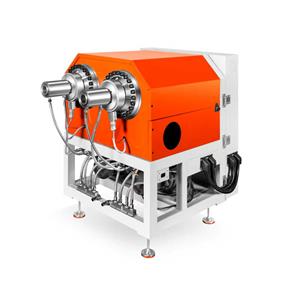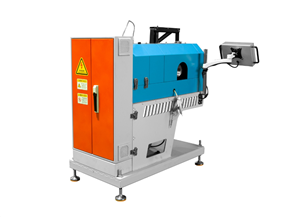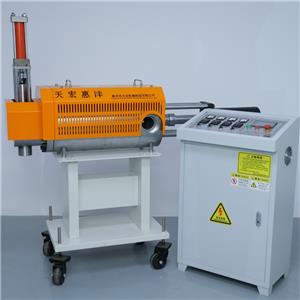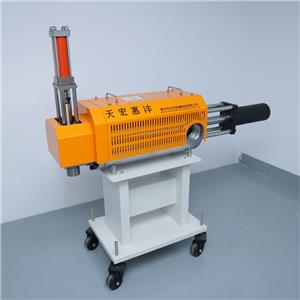Sự phát triển của ngành công nghiệp máy móc nhựa của Trung Quốc: Sự tồn tại song song của tình hình hiện tại, thách thức và cơ hội
Review of the Development ProcessChina's plastic machinery industry started early, but in the early days, it had a small scale and backward technology. From 1949 to 1989, with the rise of the domestic plastic industry, the market demand surged, and the industry entered a period of rapid development. Limited by the technical foundation, most manufacturers achieved innovation through cooperation or technology introduction, and the output gradually met the general needs of plastic processing. In the 1990s, the application of plastic products expanded to high-end fields, posing challenges to the precision and intelligence of plastic machinery. The industrial chain was further improved, and the regional pattern was basically formed. Entering the 21st century, under the dual influence of environmental protection demands and high-end manufacturing demands, the industry has entered a stage of innovative development, facing the impact of the traditional plastic production pattern and the pressure of high-end technology upgrading.
Analysis of the Current Situation of the Industry
1. Policy SupportAlthough the state rarely introduces policies directly targeting the plastic machinery industry, under the strategy of building a manufacturing powerhouse, the support for the manufacturing industry and the production of mechanical equipment indirectly benefits this industry.
For example, in 2010, the State Council issued the "Opinions on Promoting Enterprise Merger and Reorganization", which promoted the integration of industry resources;
In 2013, the "Opinions of the State Council on Accelerating the Development of the Energy Conservation and Environmental Protection Industry" put forward new requirements for plastic machinery in terms of plastic recycling;
In 2021, the "14th Five-Year Plan for the Development of Intelligent Manufacturing" clarified the green and intelligent development paths of plastic machinery. During the "14th Five-Year Plan" period, various provinces and cities formulated policies focusing on the high-end transformation of the industry, the coordination of the industrial chain, and the tackling of key technologies of high-end new materials, creating a favorable environment for the development of the industry.
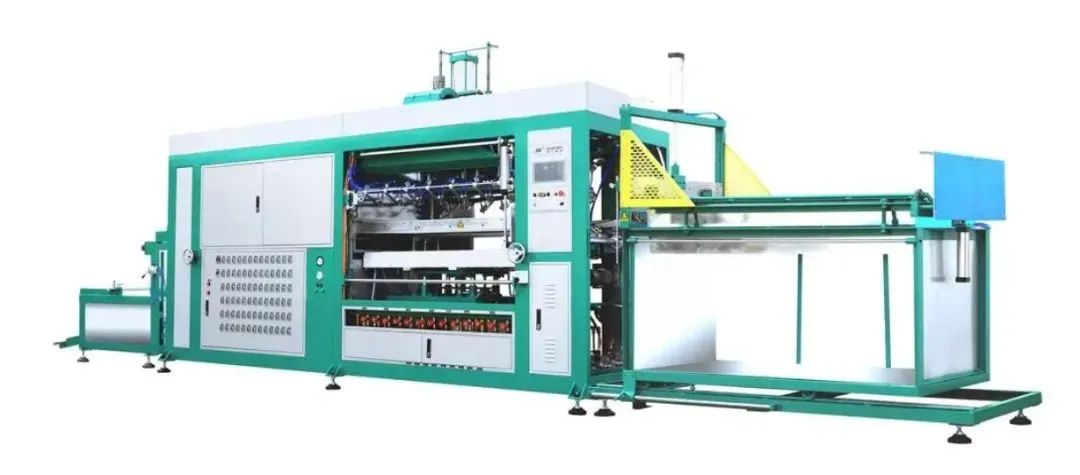
2. Market Scale and OutputIn terms of output, from 2018 to 2022, the output of special equipment for plastic processing in China showed a fluctuating trend. In 2022, it was 304,800 units, a year-on-year decrease of 19.21%. This was mainly affected by geopolitical factors and the pandemic, which led to the contraction of both supply and demand.
The operating revenue of enterprises above the designated size in the industry increased year by year from 2019 to 2021. In 2021, it reached 98.303 billion yuan, with a compound annual growth rate of 5.68% from 2019 to 2021. In 2022, it was expected to exceed 103 billion yuan.
The narrowing of output growth but the increase in revenue reflects the high-end development of products. In 2023, the output of special equipment for plastic processing in China was 293,700 units, a slight year-on-year decrease of 0.74%. The output fluctuated slightly and remained basically stable. It is estimated that the operating revenue of enterprises above the designated size in China's plastic machinery industry was approximately 100 billion yuan in 2023.
3. Product structure
Plastic machinery is classified into extruders, injection molding machines, blow molding machines, etc. according to the molding process. Among them, the injection molding machine has the largest output, application quantity and export volume, accounting for about 40% of the output value. Injection molding machines are developing from ordinary models to large-scale machines, all-electric machines, oil-electric hybrid machines and special injection molding machines. However, the overall products are still mainly medium and low-end, and some enterprises are striving to move towards the medium-end market.
The output and sales volume of extruders account for about 20-25% of plastic machinery, and the variety accounts for 30% and the proportion is increasing year by year. They are mainly concentrated in small and medium-sized general machinery, and large-scale and precision extruder units rely on imports. The research and development of hollow blow molding equipment needs to be strengthened. There are gaps between domestic equipment and foreign products in terms of adaptability, production methods and performance.
4. Regional Distribution and Enterprise CompetitionEnterprises are mostly distributed in the southeast coastal areas, the Pearl River Delta, the Yangtze River Delta and other regions. Jiangsu Province has the largest number of plastic machinery enterprises, reaching 23,450. The number of enterprises in Zhejiang, Guangdong and Shandong also exceeds 10,000 each.
In the industry competition pattern, Haitian Precision Machinery Group Co., Ltd. ranks first in the comprehensive strength of the plastic machinery manufacturing industry. Yizumi Co., Ltd., Shanghai Kingwe Machinery Manufacturing Co., Ltd., Chen Hsong Group Limited, Dalian Rubber & Plastics Machinery Co., Ltd. and other enterprises also rank among the top.
5. Import and Export SituationChina is the largest exporter of plastic machinery in the world, with a rich variety of export products. In 2022, injection molding machines were the largest category of exports, accounting for 31.80% of the total. Other extruders and other molding or shaping machines also accounted for a relatively large proportion, which were 10.96% and 5.03% respectively. In 2022, the total import and export volume of plastic machinery in China was US$10.1 billion, of which the import volume was approximately US$3.2 billion, the export volume was approximately US$6.9 billion, and the trade surplus was US$3.7 billion.
In terms of injection molding machines, in 2022, the export quantity and amount were 60,000 units and US$1.62 billion respectively, and exports consistently exceeded imports. In 2023, the import quantity, import amount, and import unit price of injection molding machines in China were 4,748 units, US$446 million, and US$93,900 per unit respectively. The export quantity, export amount, and export unit price were 64,833 units, US$1.733 billion, and US$26,700 per unit respectively.
Challenges FacedDespite the many achievements of the industry, it still faces some challenges. In the manufacturing of high-end products, there is a gap compared with the international top level, and some high-end injection molding machines, large-scale and precision extruder units, etc. are still dependent on imports. The industry standard system needs to be improved to better regulate the market and guide the development of enterprises. At the same time, the production of plastic products is subject to strict environmental protection supervision, and plastic machinery needs to continuously adapt to the requirements of green production, and conduct research and development of environmentally friendly equipment and technologies.
Development OpportunitiesWith the development of Industry 4.0 and Internet of Things (IoT) technologies, intelligence and automation have become the trends in the industry, which can improve production efficiency and product quality. As the manufacturing industry has higher requirements for precision and efficiency, the demand for high-precision and high-efficiency equipment has increased. For example, high-precision injection molding machines, extruders, etc. will become the mainstream. Consumers' demands for convenient, environmentally friendly and economical products have driven the lightweight and miniaturization of plastic products, thereby promoting the research and development of related plastic machinery and equipment.
The increasing market demand for personalized and customized products has driven the plastic machinery industry to shift towards a production mode featuring small batches and a wide variety of products, bringing new opportunities. In addition, seven departments jointly issued the "Implementation Plan for Promoting Equipment Upgrades in the Industrial Sector", setting goals such as an increase of over 25% in the investment scale of industrial equipment in 2027 compared with that in 2023. These measures have injected new impetus into the development of the plastic machinery industry. The industry will develop at a high speed in the directions of precision, energy conservation, intelligence, and multi-functional integration.
The Chinese plastic machinery industry faces both challenges and more opportunities in a complex environment. Through continuous technological innovation, improvement of industry standards, and compliance with market trends, it is expected to gain a more favorable position in global market competition and achieve high-quality development of the industry.
Ngành công nghiệp máy móc nhựa Trung Quốc phải đối mặt với cả thách thức và nhiều cơ hội hơn trong một môi trường phức tạp. Thông qua đổi mới công nghệ liên tục, cải thiện các tiêu chuẩn công nghiệp và tuân thủ các xu hướng thị trường, dự kiến sẽ đạt được vị thế thuận lợi hơn trong cạnh tranh thị trường toàn cầu và đạt được sự phát triển chất lượng cao của ngành.
